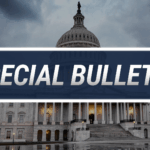I have recently seen providers receiving notices of alleged overpayments for relatively small amounts, say $10,000 or $20,000. These figures might strike a provider as manageable, especially when hiring an attorney for each dispute could incur greater costs than the alleged overpayment itself. Then, weeks pass, and you receive another for $30,000. It is common for providers to receive 5-16 demands of smaller amounts. I have one client with 12 demands, each demanding $20,000-$40,000, except a couple under $10,000.
The strategy becomes: pay the first demand, hoping that appeases the system. But then another notice arrives, and another – creating a cumulative financial burden that can compromise operations.
Even if each amount seems relatively small on its own, collectively, they can escalate to six figures or more. And every time you finally decide to involve legal help, you’re already out the cost of that first boardroom decision – effectively, a retainer gone before any value is realized.
So, what’s the tipping point for involving legal counsel?
In my opinion, it’s upon receipt of the very first notice of overpayment, no matter how low the demand. From my experience, providers that receive low payment demands will receive more overpayment demands. The money paid to the Medicare auditor is money that should have been defending you to pay nothing.
Cases Where Providers Challenged and Won
1. Cancer Center Modifier 25 Case
A prominent case involved a cancer center contesting a roughly $2 million overpayment involving modifier 25 (Evaluation & Management services performed on the same day as procedures). The Administrative Law Judge (ALJ) found that:
- The contractor did not use a valid random sample, invalidating extrapolation; and
- The E&M services were medically reasonable and separately identifiable, thus appropriately billable with modifier 25.
This demonstrates that robust documentation and a focus on procedural accuracy can defeat extrapolation.
2. Dr. Michael K. Gavigan, Podiatrist
In a prior non‑ALJ carrier‑level hearing (though still an administrative decision), Dr. Gavigan successfully challenged an overpayment amount calculated using flawed sampling methodology. The carrier lacked documentation for sampling parameters like random seed, error rates, and justification for sample size. As a result, extrapolation was found unfair, and recovery was limited to the exact overpayment identified in the reviewed sample: just over $2,500.
While not an ALJ decision, Dr. Gavigan’s case emphasizes the due‑process imperative: when sampling methodology is opaque or poorly documented, extrapolation can and should be resisted.
3. “Without Fault” ALJ Wins
While not strictly about small claims or extrapolation, recent ALJ decisions have ruled favorably under Medicare’s “Without Fault” provision, where providers reasonably relied on Centers for Medicare & Medicaid Services (CMS) guidance or lacked intent to deceive. Notable examples include:
- A gastroenterology practice that billed for anesthesia services found later noncompliant, but the ALJ concluded the provider was “without fault;” and
- A podiatry practice billing for amniotic injections deemed experimental, yet the ALJ ruled no provider fault because the provider had made prior inquiries and followed CMS guidance in good faith.
These scenarios underscore that even when payment determinations are technically incorrect, it’s possible to win by demonstrating reasonable reliance and transparency. A fragmented onslaught of Medicare overpayment demands can undercut a provider’s willingness to fight, especially when each demand seems small.
Yet, those small demands, when aggregated, can significantly exceed the cost of legal help – and leave you out a retainer with little return, if you wait too long to act. Providers should monitor cumulative liability closely, evaluate duplication or shared audit themes, and engage counsel when the numbers or risk justify the investment. After all, winning a clear appeal may save not just dollars, but the operational peace of mind every provider needs.
EDITOR’S NOTE:
The opinions expressed in this article are solely those of the author and do not necessarily represent the views or opinions of MedLearn Media. We provide a platform for diverse perspectives, but the content and opinions expressed herein are the author’s own. MedLearn Media does not endorse or guarantee the accuracy of the information presented. Readers are encouraged to critically evaluate the content and conduct their own research. Any actions taken based on this article are at the reader’s own discretion.






















